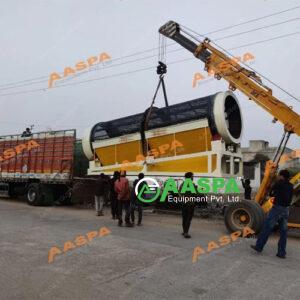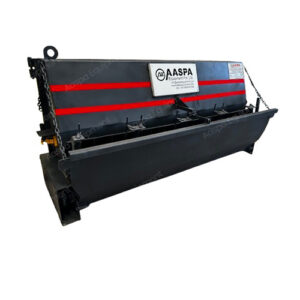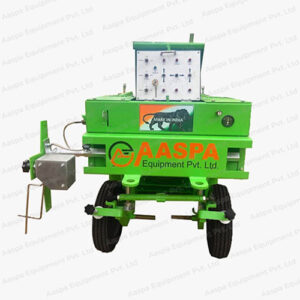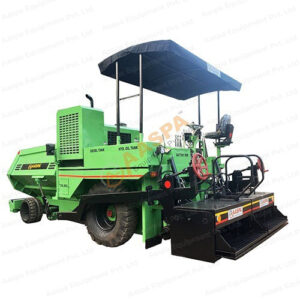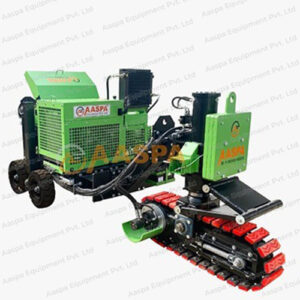Waste Incineration Material Shedding Material Recovery Facilities Municipal Waste Composting
MANAGING WASTE TODAY FOR A SUSTAINABLE LIFE TOMORROW
Bringing the dream of sustainable future closer to our lives. Aaspa, a highly
reputed waste management firm works towards utilizing expert manpower
and world-class technology for proper disposal of waste from various
industries. Supporting and encouraging the management of waste in a
structured manner. Aaspa has established significant benchmarks for the
industry to follow.
ABOUT US
Aaspa Equipment private Limited an ISO 9001:2015 is the pioneer manufacturer of Waste Incinerators. Municipal Solid Waste Management plant and Equipment. Aaspa today stands as the leader in India for providing most efficient waste management equipment and solutions for all the waste types ranging from Medical / Municipal / Industrial / Hazardous I Animal / General and Electronic waste. We have been providing the latest technology plant and equipment with our strong in-house R&D and dedicated and qualified Design. Production. Quality and After sales team. Our modern manufacturing facility spread over 125.000 sq. ft. is well equipped with the latest plant and machinery for high quality equipment manufacturing. Aaspa products are being used by leading industrial houses and several government organizations in India besides our overseas installations in Kingdom of Saudi Arabia, Azerbaijan, U.A.E.. Syria, Lebano, Cyprus, Afghanistan, Nepal, Bangladesh, Sri Lanka, Bhutan, Brunei, Vietnam, Maldives, Fiji, New Zealand, British Virgin Islands, Hondura, Colombia, Hungary, Germany, Libya, Sudan, Congo, Guinea, Mauritania, Liberia, Sierra Leone, Nigeria, Kenya, Tanzania, Namibia, Angola, Seychelles etc.

DISPOSAL BY MEANS OF COMBUSTION
Incineration is a waste disposal method in which solid, liquid and sludge wastes are subjected to combustion, converting them into residue and gaseous products. The incinerator is provided with appropriate air pollution control equipments that clean the flue gases of gaseous and particulate matter before releasing them into the atmosphere
- Incinerators successfully reduce the solid mass of the originalwaste by 80-85% and the volume by 95-96%
- The Core Competence of AASPA lies in designing and manufacturing of all types of waste incinerators as stated below:
- Aaspa incinerators come with the option of wet or dry air pollution control in the form of :
- Cyclone separators
- Low pressure wet scrubbers
- High pressure venturi scrubbers
- Fabric Filters
- Ceramic Filter(EU Compliant)
- Electrostatic Precipitators
- Medical/Hospital Waste
- General Waste
- Industrial Waste
- Hazardous Waste
- Petrochemical Waste
- Pharmaceutical Waste
- Animal Waste
- Poultry Waste
- Slaughter House Waste
- Textiles and Packaging Waste
- Intergrated solid and liquid waste
- any other type of waste AASPA experts assess waste streams and suggest the right incinerator and air pollution control technology for you
Municipal Solid Waste (MSW) consists of everyday items that are discarded by people. Aaspa offers latest modern mechanized plant with capacity 2 tons day to 2000 tons Klay. Venn various technical sources, we also provide equipment based on multiple technologies as per waste type for compost lines and Refuse Derived Fuel. keeping in mind the requirements of Rural and Urban Areas. We take pride in various Aaspa Compost Plants running all across the country on Electrical and Hydraulic Modules.
DECENTRALISED COMPOSTING SOLUTIONS
Composting is the controlled decomposition of organic materials into a rich soil known as compost. By composting organic waste you are returning nutrients back into the soil in order for the cycle of life to continue. Composting reduces the volume of organic waste significantly. While the compost produced is used for agricultural and horticultural purposes.
DECENTRALIZING THE COMPOSTING PROCESS, AASPA OFFERS TWO TYPES OF COMPOST UNITS.
10 Days Compost Machine The machine is most ideal for smaller setups to convert food waste into compost. Eco says it all. The machine is economical In cost and comes with a curing system in which compost matures in controlled humidity and environmental conditions. Batch type operation makes it viable
Machine capacity : 100, 200, 300, 500, 800, 1000, 1500, 2000, 3000, 5000, down the initial investment. 10000 kg per day.
24 Hours Quick Compost Machine The compost 24 is the most advanced composting machine that converts food waste into compost in just 24 hours. No need for a separate curing system, this model is well equipped with moisture reduction systems, odor control mechanisms and fully automatic operation. Just load the machine and forget it. Ready matured compost is simply taken out the next day.
Machine capacity : 100, 200, 300, 500, 1000, 2000, 5000 kg per day
- Composting reduces overall organic waste being sent to the landfills by 80-90 %
- Significantly reduces pest problems.
- Compost helps the soil hold nutrients long enough for plants to use them.
- Saves money for you and your county in reduced soil purchases and reduced local disposal costs.
- Great for the environment
RECOVERY OF RECYCLABLES FROM MUNUCIPAL SOLID WASTE
- Today’s MSW management systems are highly integrated and include various options in materials collection,
- materials recovery, composting, combustion and landfilling.
- A Materials Recovery Facility (MRF) is where recyclable materials that are collected from households are sorted into different types (e.g. plastics, cardboard, paper, metal) using a mixture of manual and automated methods. When the materials have been sorted they are sent to reprocesses and manufacturers where they are used to create new products.
- The main function of the MRF is to maximize the quantity of recyclables processed, while producing materials that will
generate the highest possible revenues in the market. - The mechanical sorting mechanisms and processes include: conveyors, trommel screens, sorting stations, ballistic screens, ferrous and non ferrous separators, optical sorters, bag breaker, and balers. Processing at the facility begins mechanically, becomes manually and then goes back to a mechanical process for final quality control. The result is unparalleled diversion and consistently cleaner product.
MRF INCLUDE
• Conveyor System
• Ferrous Metal Separation
• Screening
• Air/Density Classification
• Non Ferrous Metal Separation
• Manual Sorting /Separation of Various inputs
• Size Reduction
• Baler and compactor
SHREDDERS
LOW SPEED HIGH TORQUE SHREDDING TECHNOLOGIES AVAILABLE IN HYDRAULIC & ELECTRICAL DEIVE OPTION
SINGLE SHAFT SHREDDERS (50 KGS/ HR. TO 5000 KGS/HR.)
• The material is fed by means of a conveyor belt or manually across the entire width of the machine. Large
•Numb rod cutting blades work the material between the rotor. The hydraulically/mechanically driven ram
• Feeds the material to the rotor. A well dimensioned screen is installed in the lower part of the housing,
•Which retains the material in the cutting chamber until it is discharged straight down out of the machine. This sturdy and compactly built machine is designed for the special requirements of modern recycling operations. It comes with following features:
• Excellent accessibility to the cuttingchamber
•No need of extensive adjustments inside the machine
• Screen Frame is opened hydraulically/mechanically
• Throughputs range between 50kgs/hr. to 5000 kgs/hr.
• depending on the model, material type and application
•Optimum performance in every
TWIN SHAFT SHREDDERS (50 KGs/Hr. TO 1000 KGs/Hr.)
• Aaspa Twin Shaft series Shredders are designed so operate atslower speeds. utilizing high torque and the tearing, crushing & shearing actions between counter rotating, opposing blades.This results in minimal power consumption and reduced noise as compared to other types of shredders, while still achieving high throughput rates and low maintenance cost.
•Suited to the size reduction of bulky materials, these machines are supplied complete with electrical control panel and are guarded to prevent access to moving parts, ensuring safety. Some highlight features include: Double-shaft shredders are robust and rugged machines
•Throughput up to 10 Tons/hr.
•Less material preparation
•Safe to operate
•Very low vibration
•Lower dust and noise means a safer work environment
•Lower risk of projectiles ejected from the cutting chamber
•Longer life to the cutters and entire equipment
•Higher online reliability and lower power requirements
FOR THE SIZE REDUCTION OF :
• Medical waste
• Municipal Solid Waste
• E-waste
• Pharmaceuticals
• Plastic
• Aluminum Cans and Bins Biomass
• Agricultural Waste
• Card Board
• Containers
• Electrical wires
• FRP
• Hazardous waste
• Hotel/Kitchen waste
• Industrial waste
• Jute
• Laminates
• Oil Filters
• Tires
• Pet Bottle
• Packaging Waste
• Rubber
• Textile
• Vinyl
• Automobile waste
• Any other type of waste

